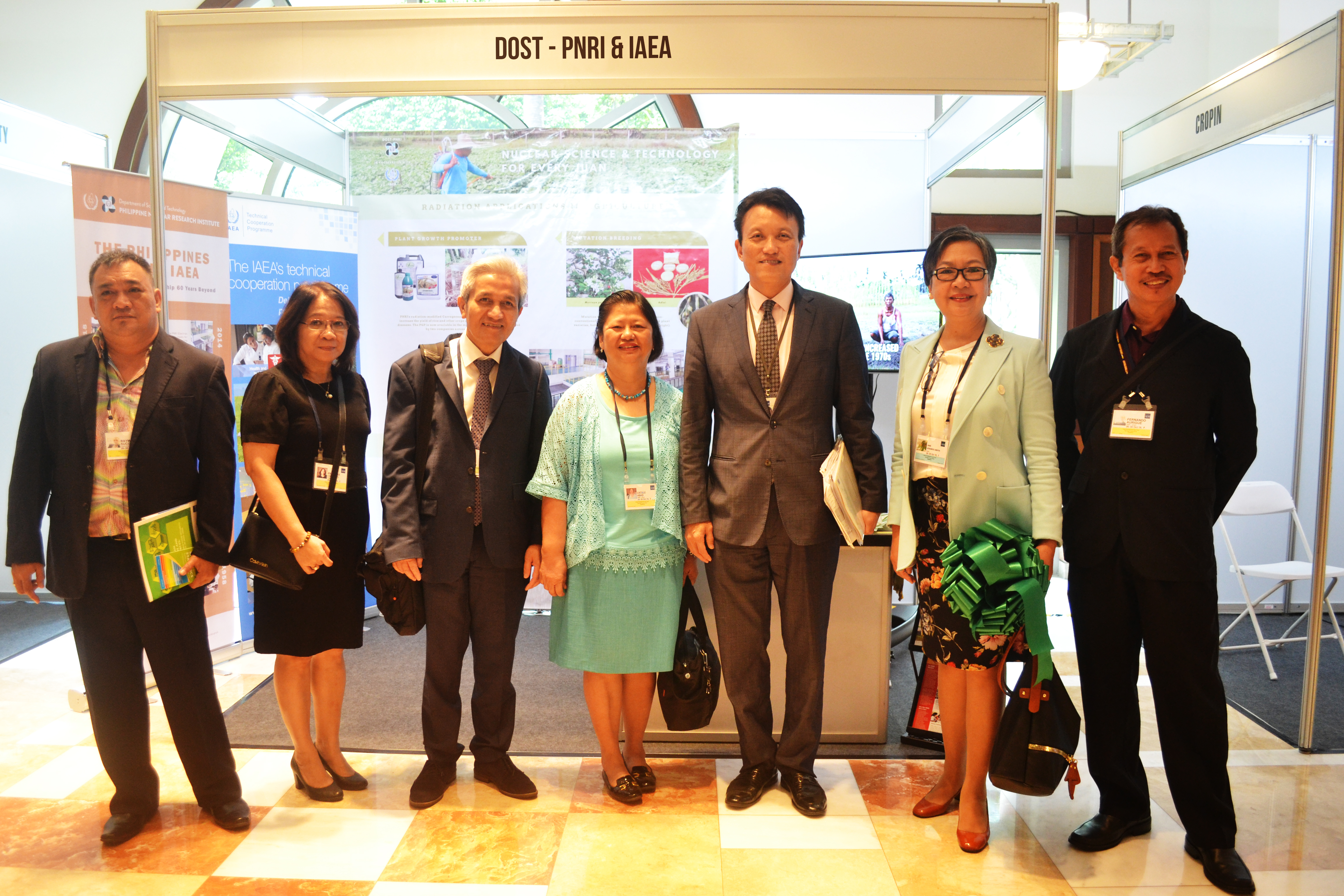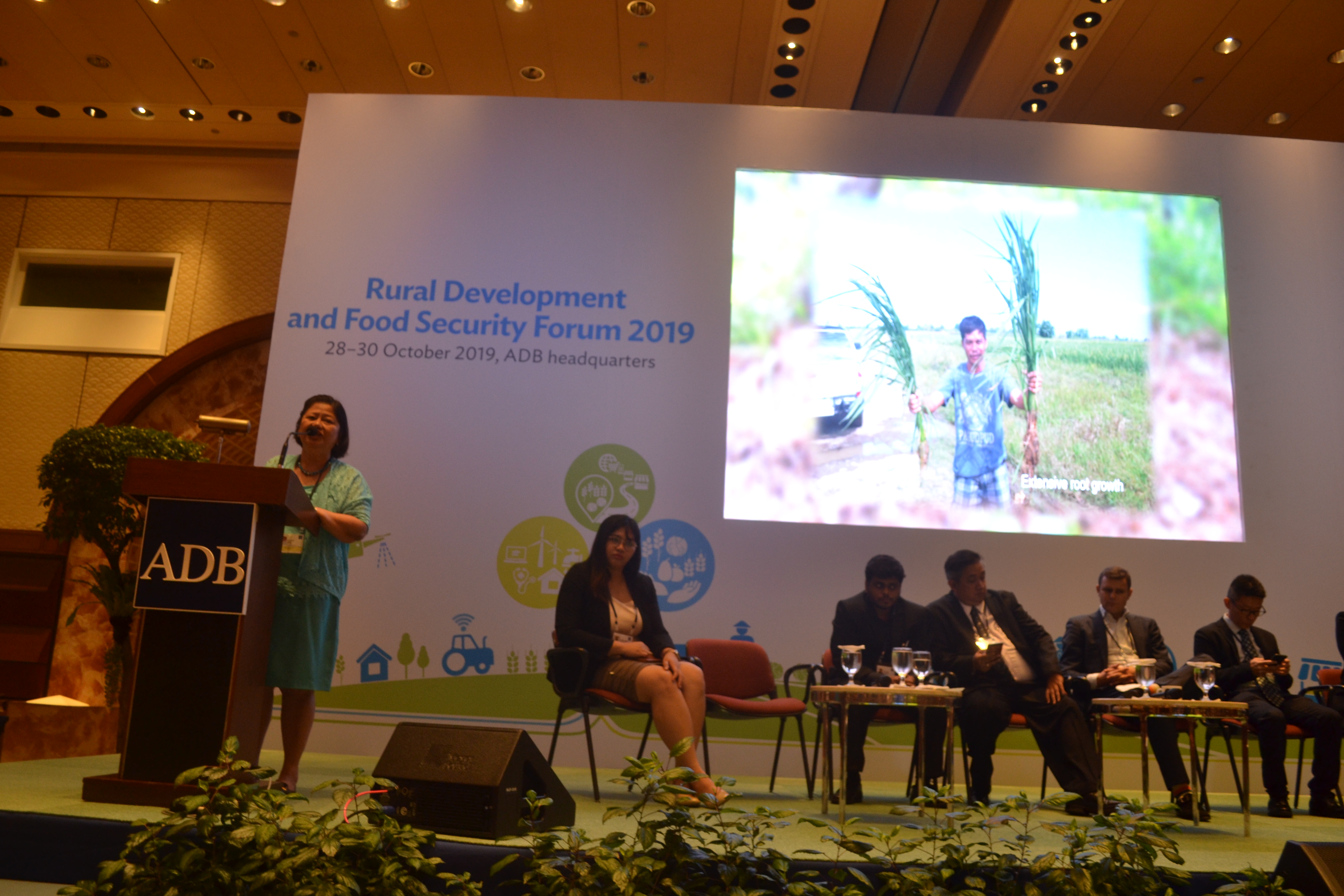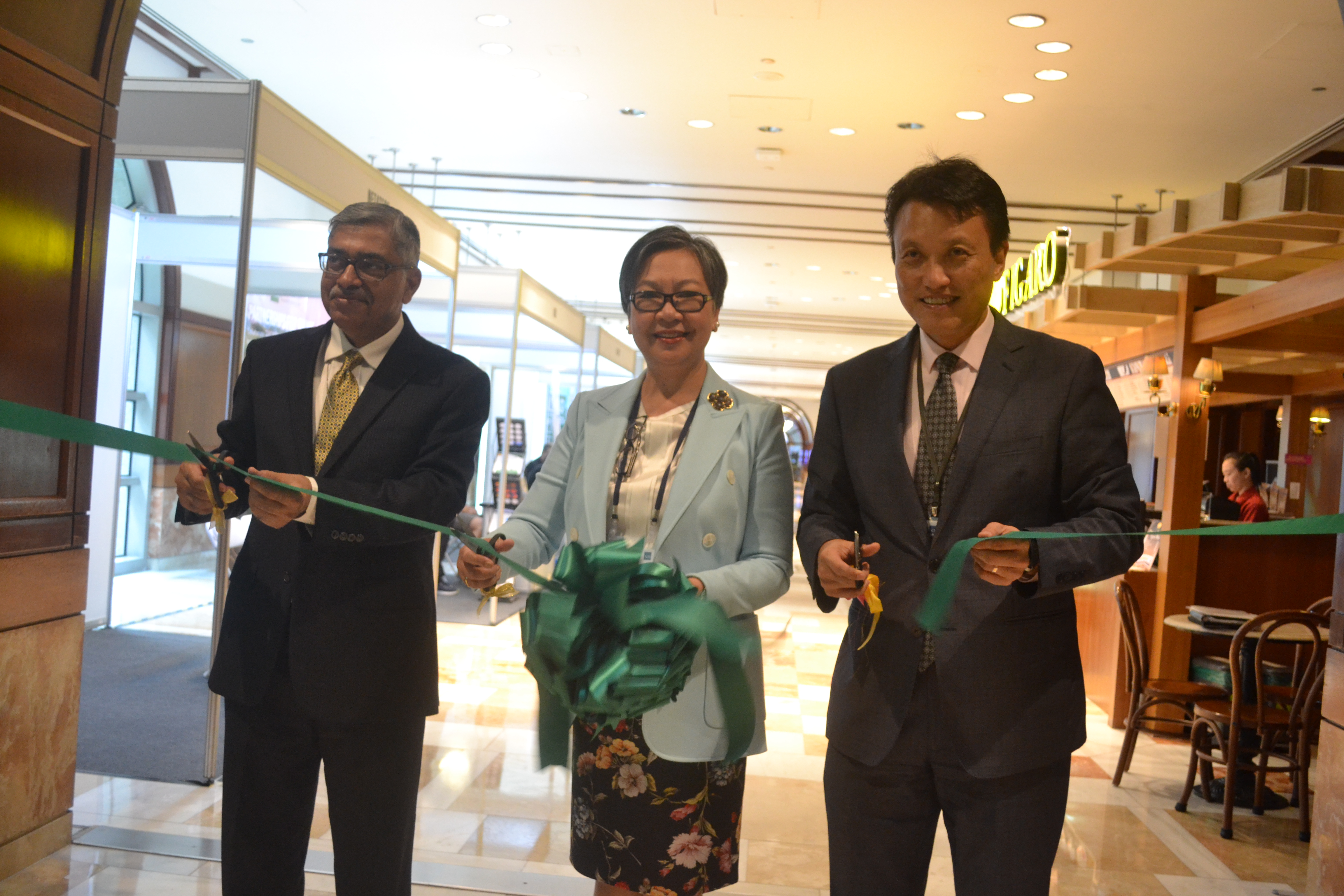
IAEA Director of the Technical Cooperation Division for Asia and the Pacific Dr. Jane Gerardo-Abaya (2nd from right) with officials and scientists from the ADB, IAEA and DOST-PNRI at the opening of the Technology and Innovation Marketplace exhibit area on the first day of the ADB Rural Development and Food Security Forum
Philippines Features Nuclear Technologies for Food Security at ADB Forum
The Philippines recently showcased its innovative nuclear and radiation-based solutions to challenges in food security as well as its contributions to progress in rural communities in the Asia-Pacific region during the Rural Development and Food Security Forum at the Asian Development Bank (ADB) headquarters in Metro Manila, Philippines from October 28 to 30, 2019.
No less than officials from the International Atomic Energy Agency (IAEA) and scientists from the Department of Science and Technology - Philippine Nuclear Research Institute (DOST-PNRI) spearheaded the presentation of nuclear science and technology applications in radiation processing, mutation breeding, food authentication and water resources management.
The DOST-PNRI and IAEA exhibit was part of the Technology and Innovation Marketplace during the forum. Filipino scientist Dr. Jane Gerardo-Abaya, who currently serves as the IAEA Director of the Technical Cooperation Division for Asia and the Pacific, joined the ADB officials for the cutting of the ribbon and official opening of the exhibits.
Among these applications are the Carrageenan Plant Growth Promoter (PGP) formulated to increase the yield of rice crops by more than 20 percent, and make the plants more resistant to blight and infestation.
Born out of the successful IAEA Technical Cooperation Program between the Philippines and the IAEA, the Carrageenan PGP is now available in the market and is already being used by farmers across the country. The technology was presented by PNRI Scientist Dr. Lucille Abad, who heads the institute’s Atomic Research Division.
Other technologies presented are the development of mutant varieties of ornamentals with unique characteristics, as well as staple food crops such as adlai, which may serve as a substitute for rice and corn.
Filipino researchers also featured isotope-based techniques in various fields, from analyzing possible adulteration of vinegar and other condiments used in households, to hydrology and the management of precious groundwater resources.
With more than 250 participants from the government, NGOs and civil society groups, business, academic and research sectors, the ADB forum proved to be an excellent avenue to feature nuclear science as one of the many viable innovations and best practices that can be adopted to ensure food security and prosperity among rural areas in the Asia-Pacific region.

Dr. Lucille Abad, Career Scientist and Atomic Research Division Chief of DOST-PNRI, presents the radiation-processed Carrageenan Plant Growth Promoter on the first day of the ADB Rural Development and Food Security Forum.

Dr. Jane Gerardo-Abaya, Director of the IAEA Technical Cooperation Division for Asia and the Pacific (middle) joined ADB officials for the cutting of the ribbon and official opening of the Technology and Innovation Marketplace exhibit area.












































